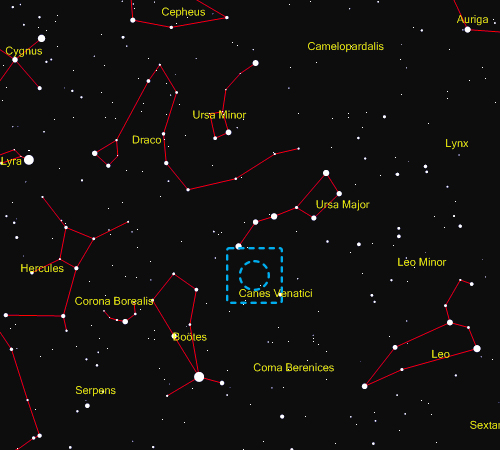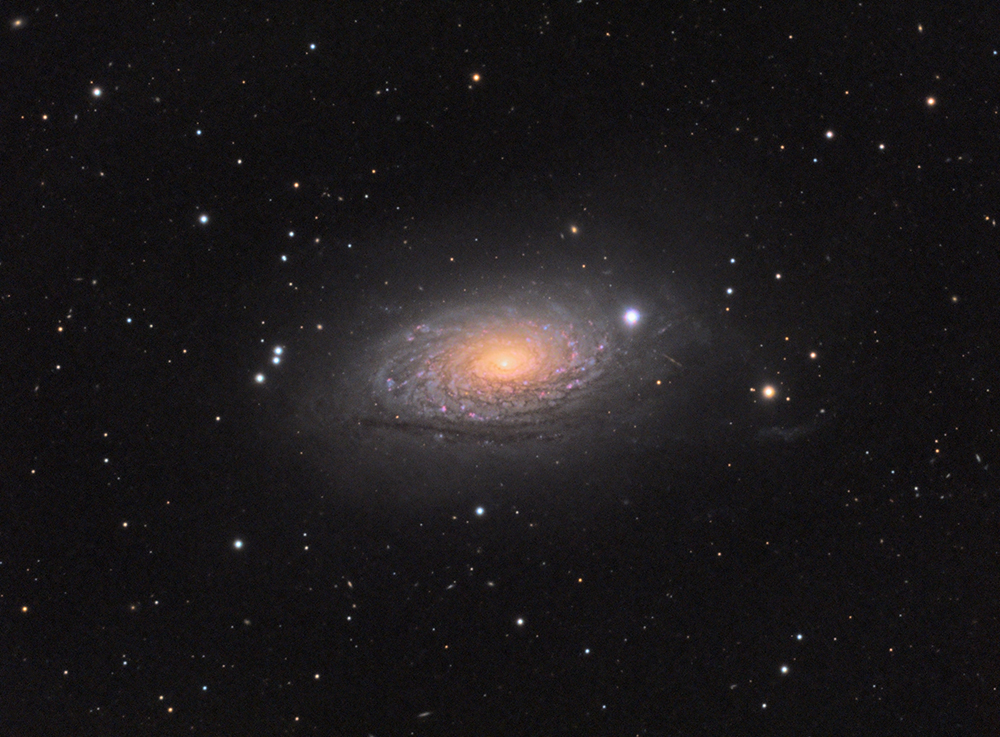The Sunflower Galaxy, named because of its bright yellow central disc and short spiral arm segments with active star forming regions and dark dust lanes, is a flocculent spiral galaxy. It has bright starburst regions that occur within the outer arms. The galaxy is located in the northern constellation of Canes Venatici, just a few degrees below M51. It was discovered by the French astronomer Pierre Méchain, who was Charles Messier’s assistant, on 14th June 1779 and was catalogued by Messier later the same month. It was Méchain’s first discovery and one of his 27 contributions to the Messier Catalogue. In the mid 19th century, Lord Rosse observed the spiral structure of M63 and the galaxy was one of the first that he discovered. He listed the object in the 14 ‘spiral nebulae’ discovered before 1850.
M63 is a member of the M51 Group, which is a group of galaxies located in Canes Venatici that are bound together by gravity. The group includes: M51, NGC 5023, NCG 5229 and UGC 8331. On the 25th May 1971, a Type Ia supernova, triggered by a violent explosion of a white dwarf, was detected in one of the galaxy’s arms. Named SN 1971l, it reached a magnitude of +11.8. Under close observation, the galaxy is believed to contain a supermassive black hole with a mass of about 30 million solar masses. The galaxy’s outer regions are rotating at such a rate that, without the presence of dark matter, the galaxy would rip itself apart.
There are three distinct features in M63: extended spiral arms visible in near infrared, many bright pink regions that line the main structure and an asymmetrical aspect to the galaxy. Given these three observations, it is believed that the extended arm features formed because of gravitational interaction with neighbouring galaxies. These extended areas cover more than double the true extent of M63 and even exceed the extent of the galaxy’s normal spiral arms.
In this image, the Sunflower Galaxy has a distinct orange colour in the centre and tightly wound arms with no central bar feature. There are several smaller, more distant galaxies visible throughout the image. Just below the Sunflower Galaxy, close to the bottom of the image, it is possible to make out the galaxy PGC 4011932, which resides about 860 million light years from our solar system. |


